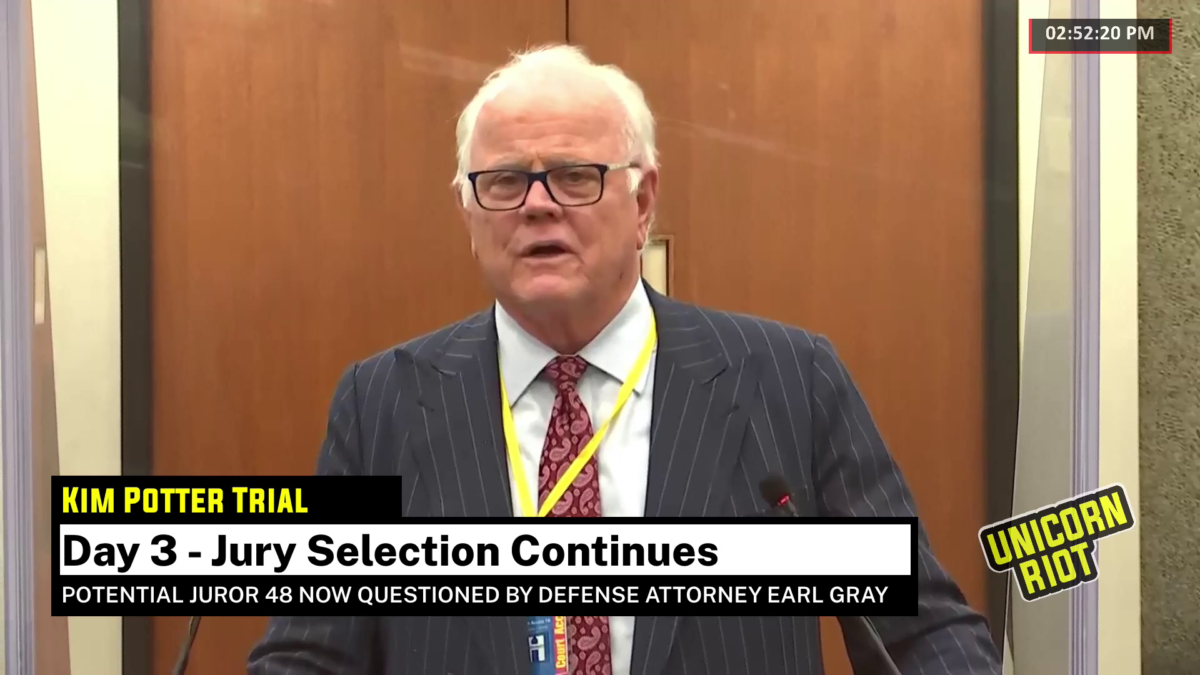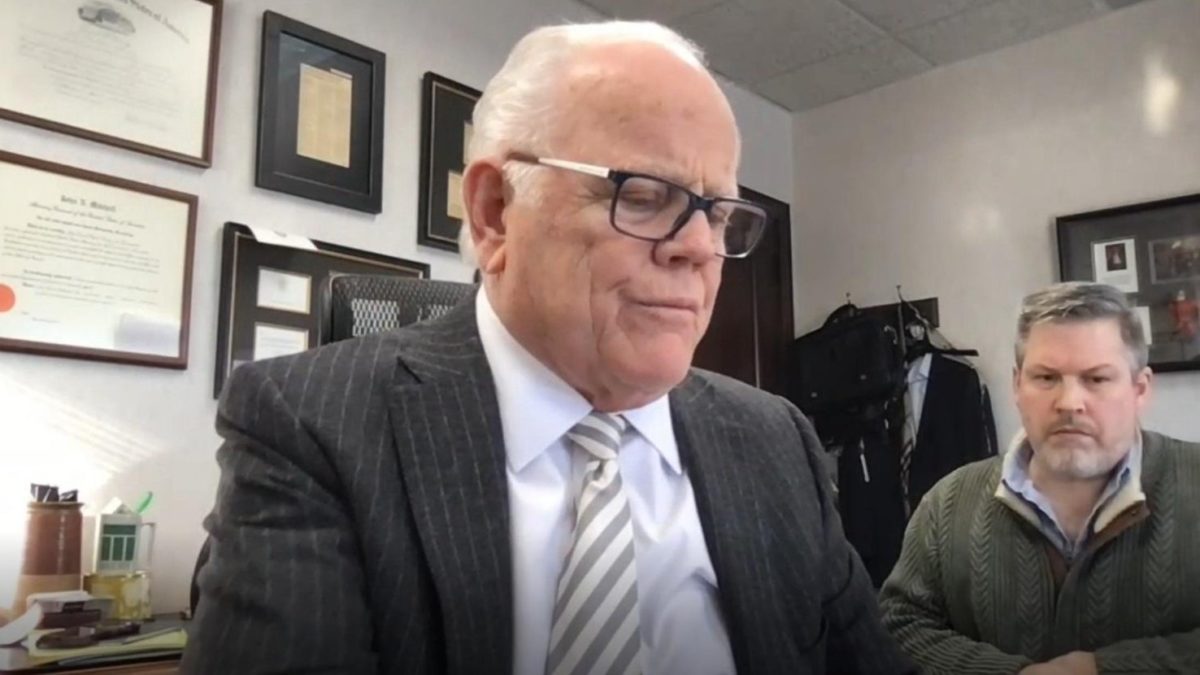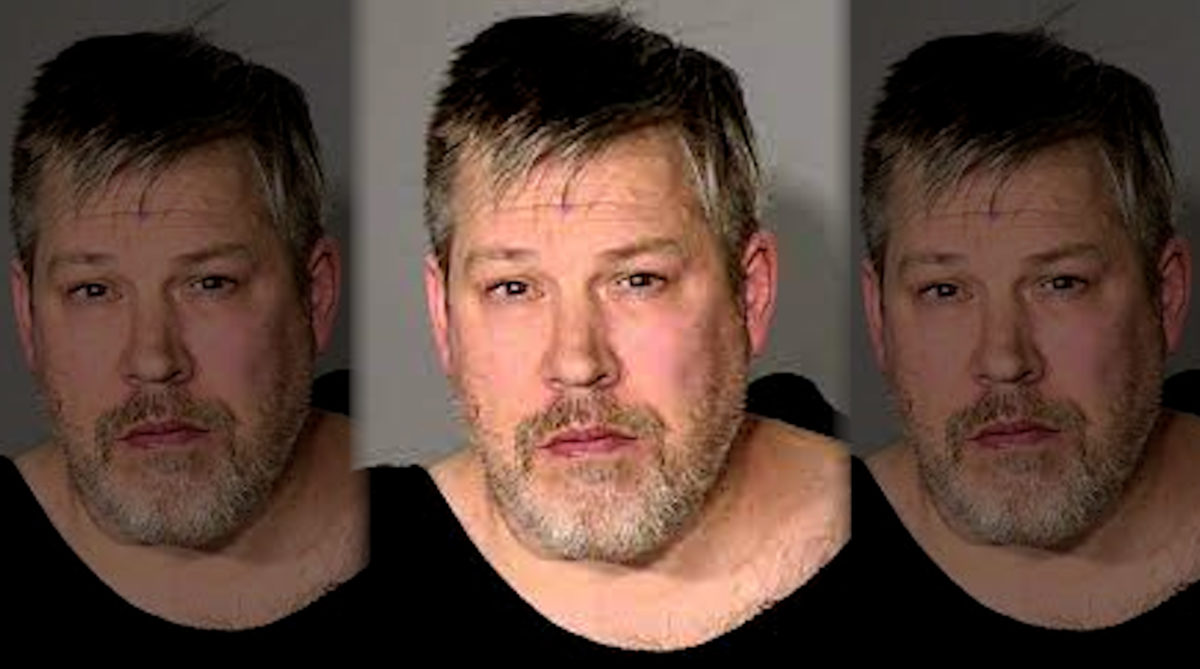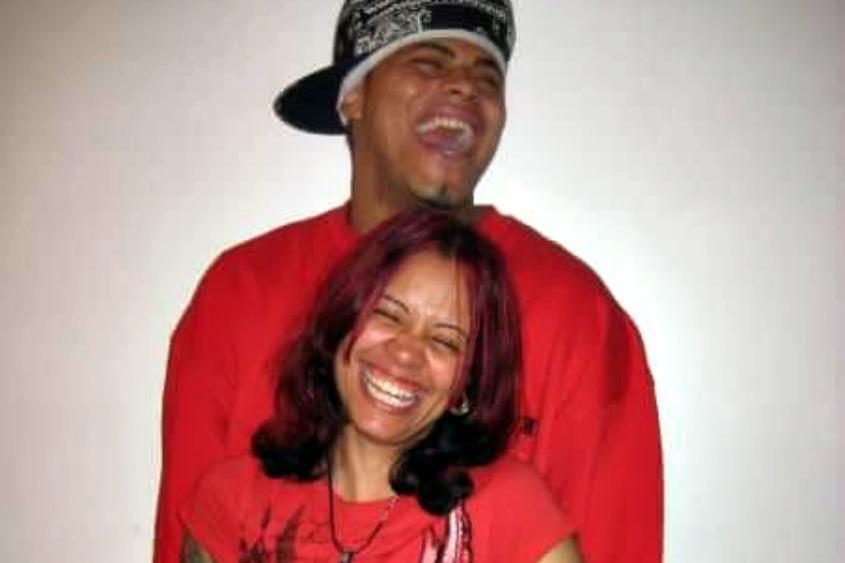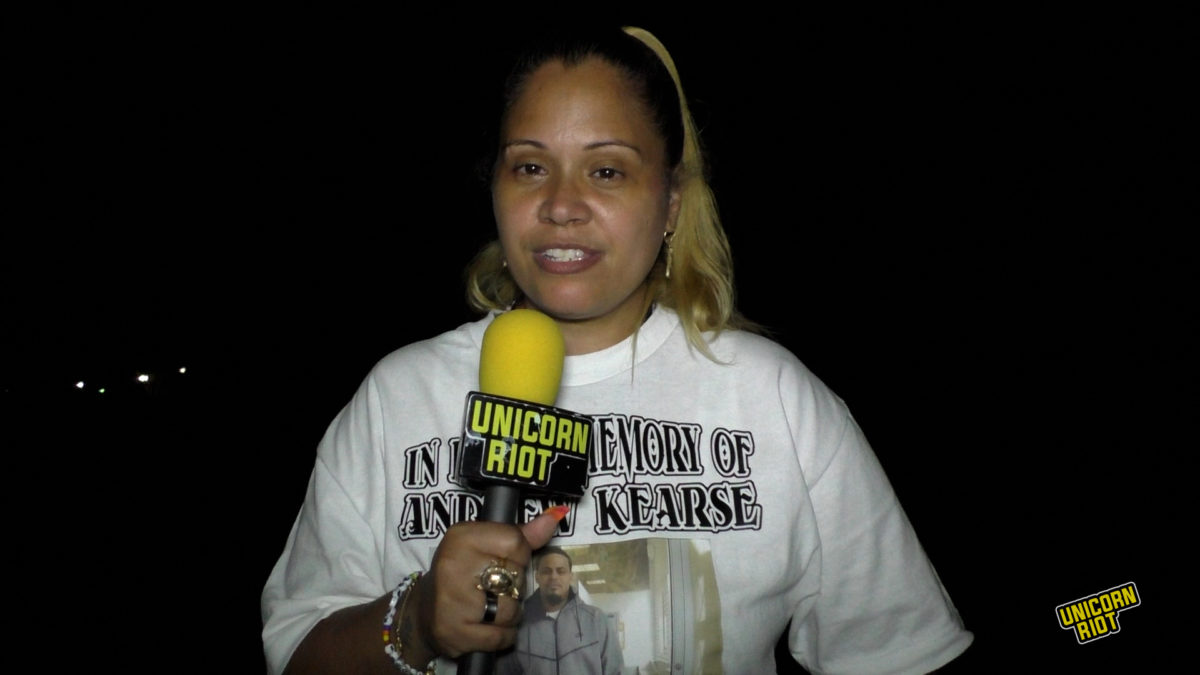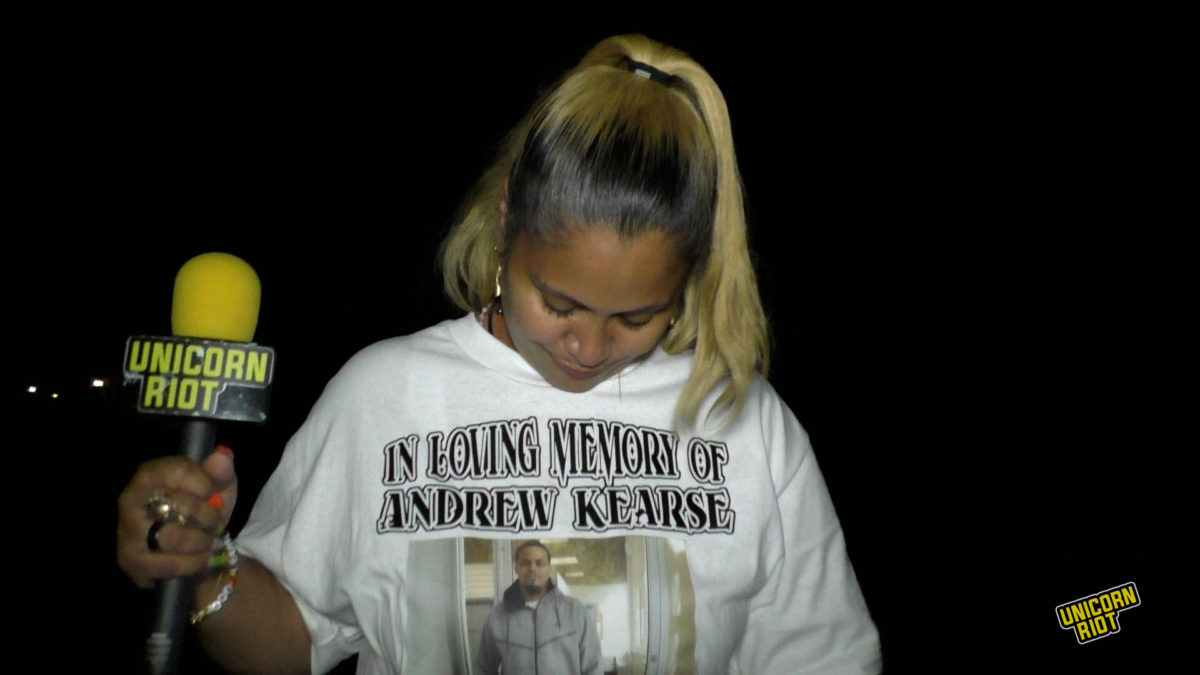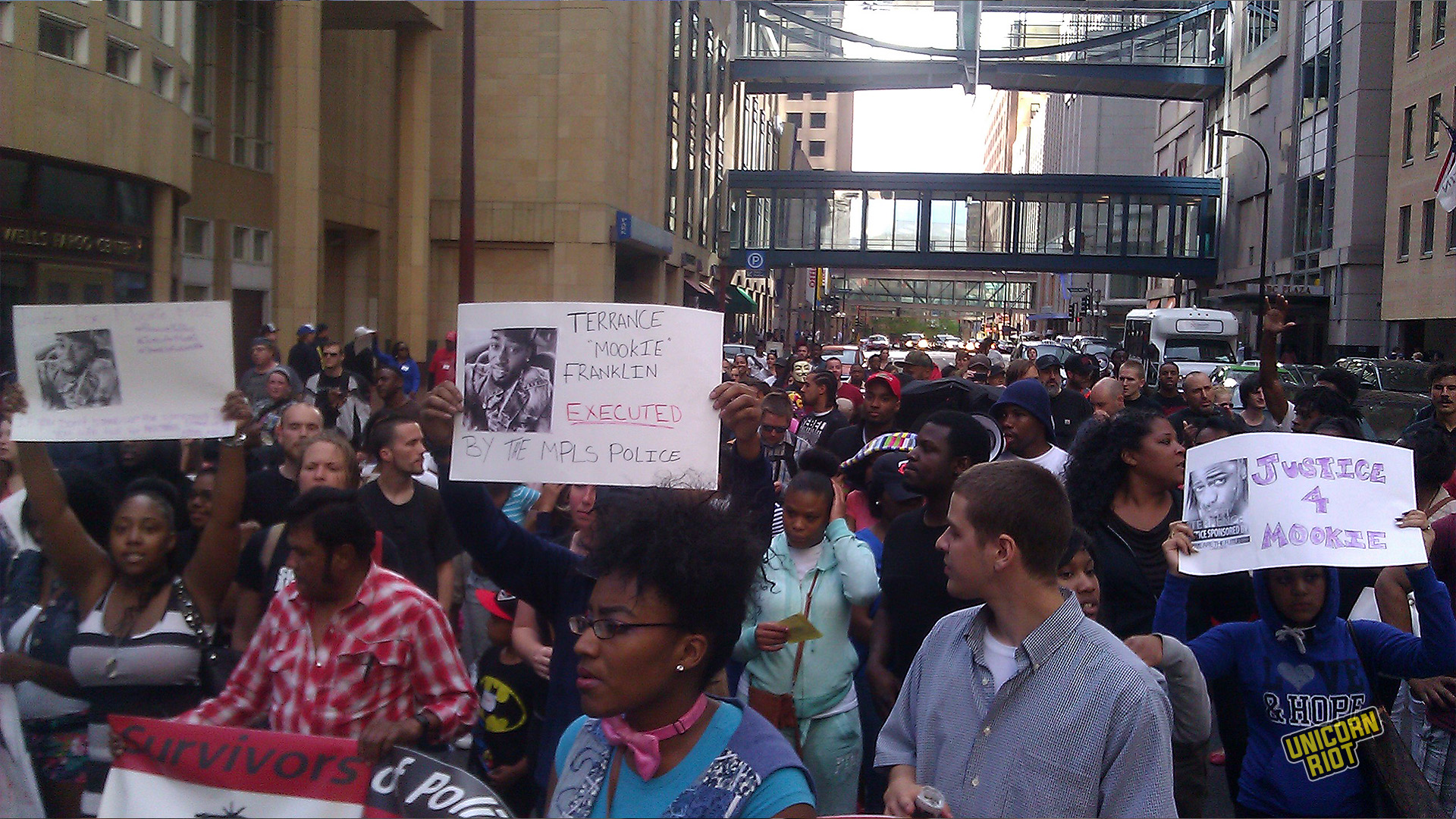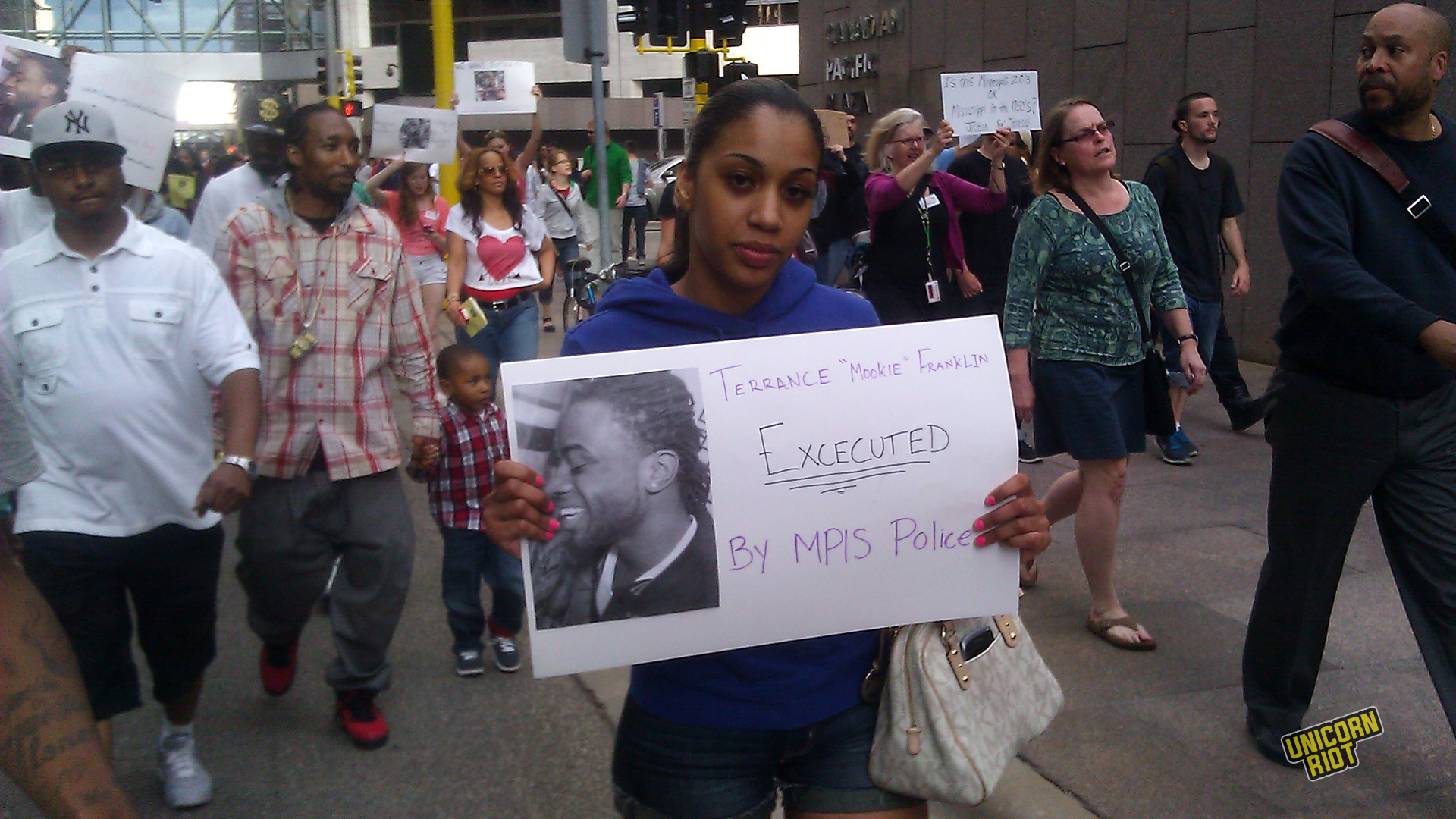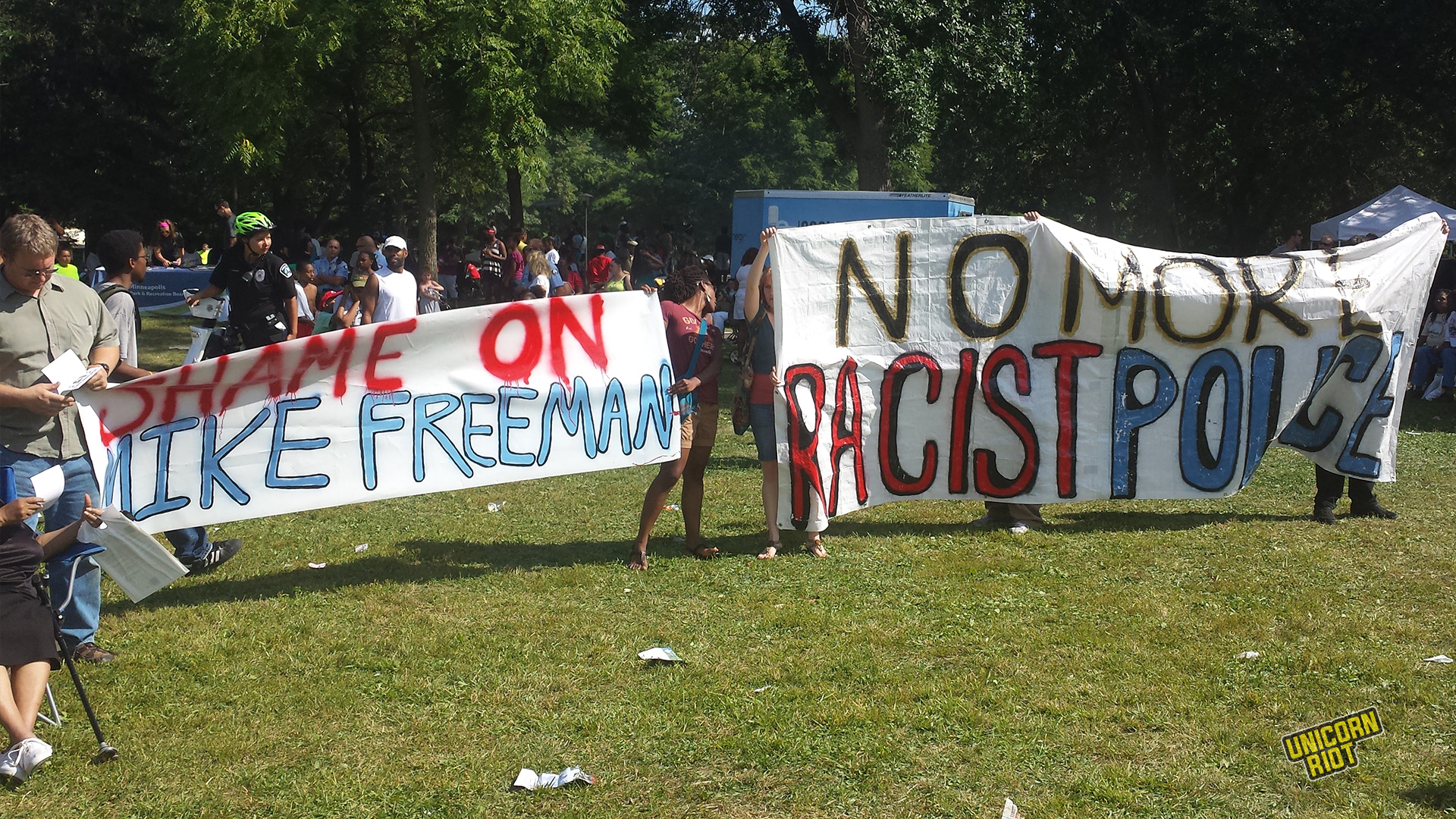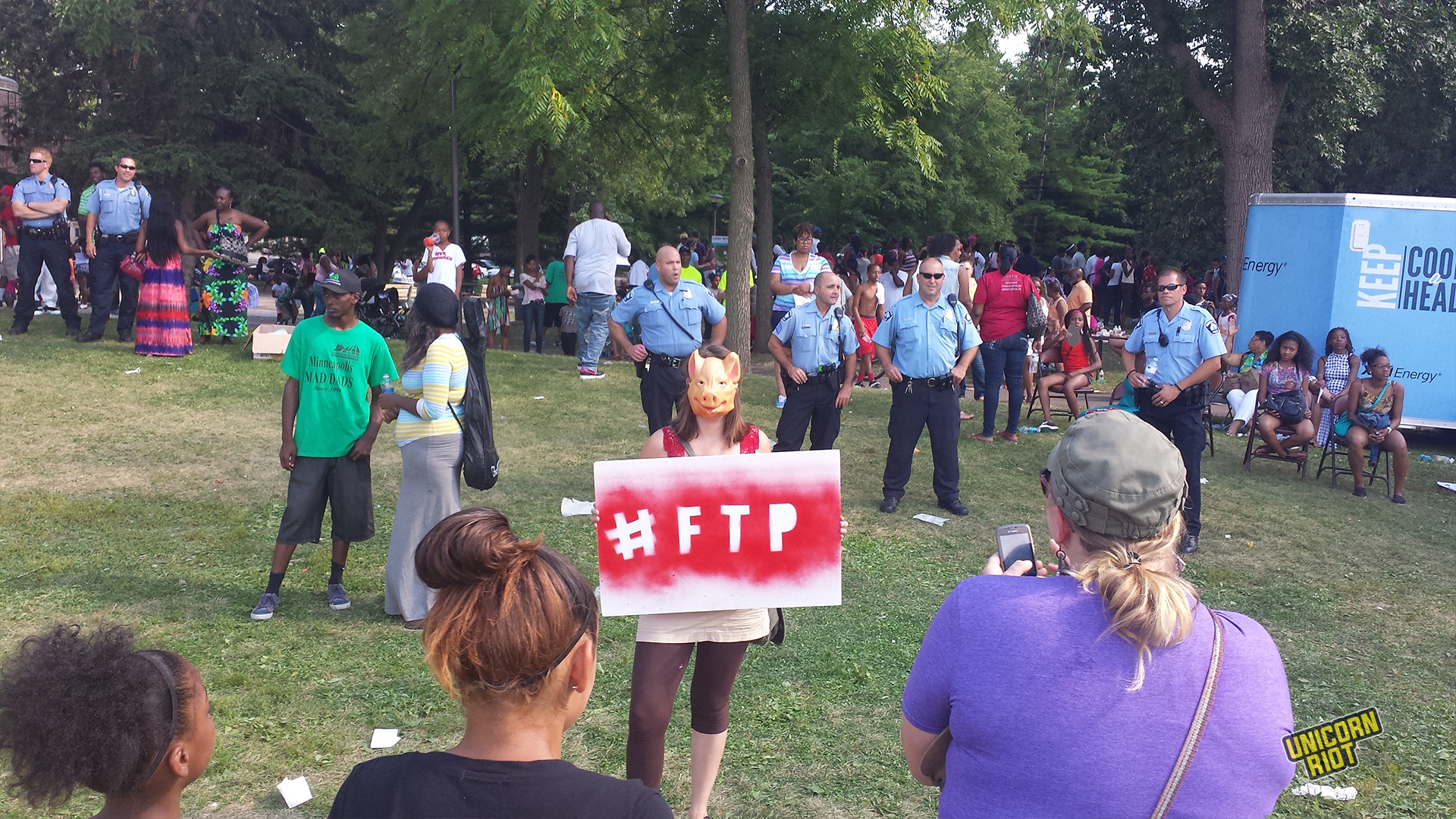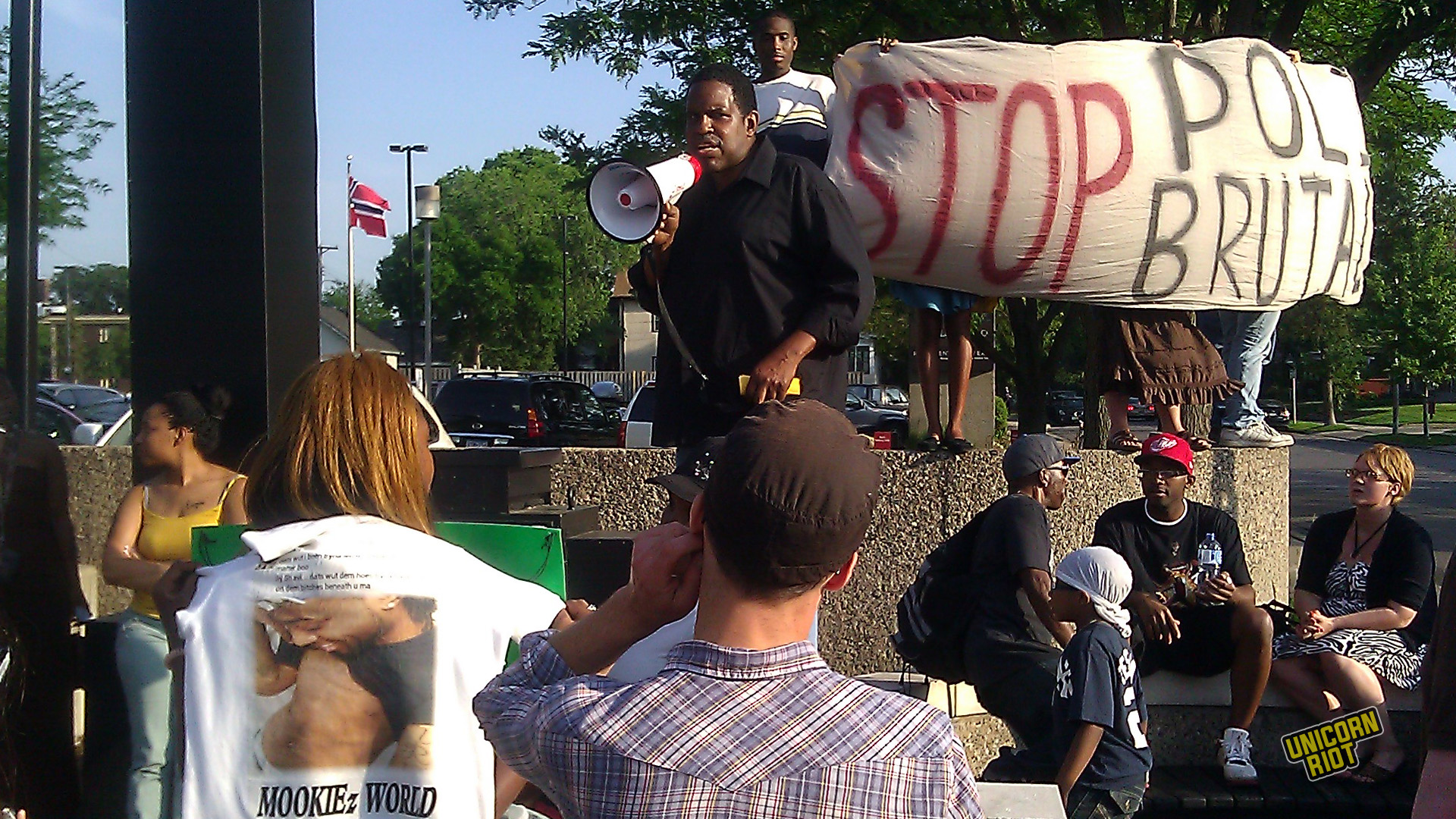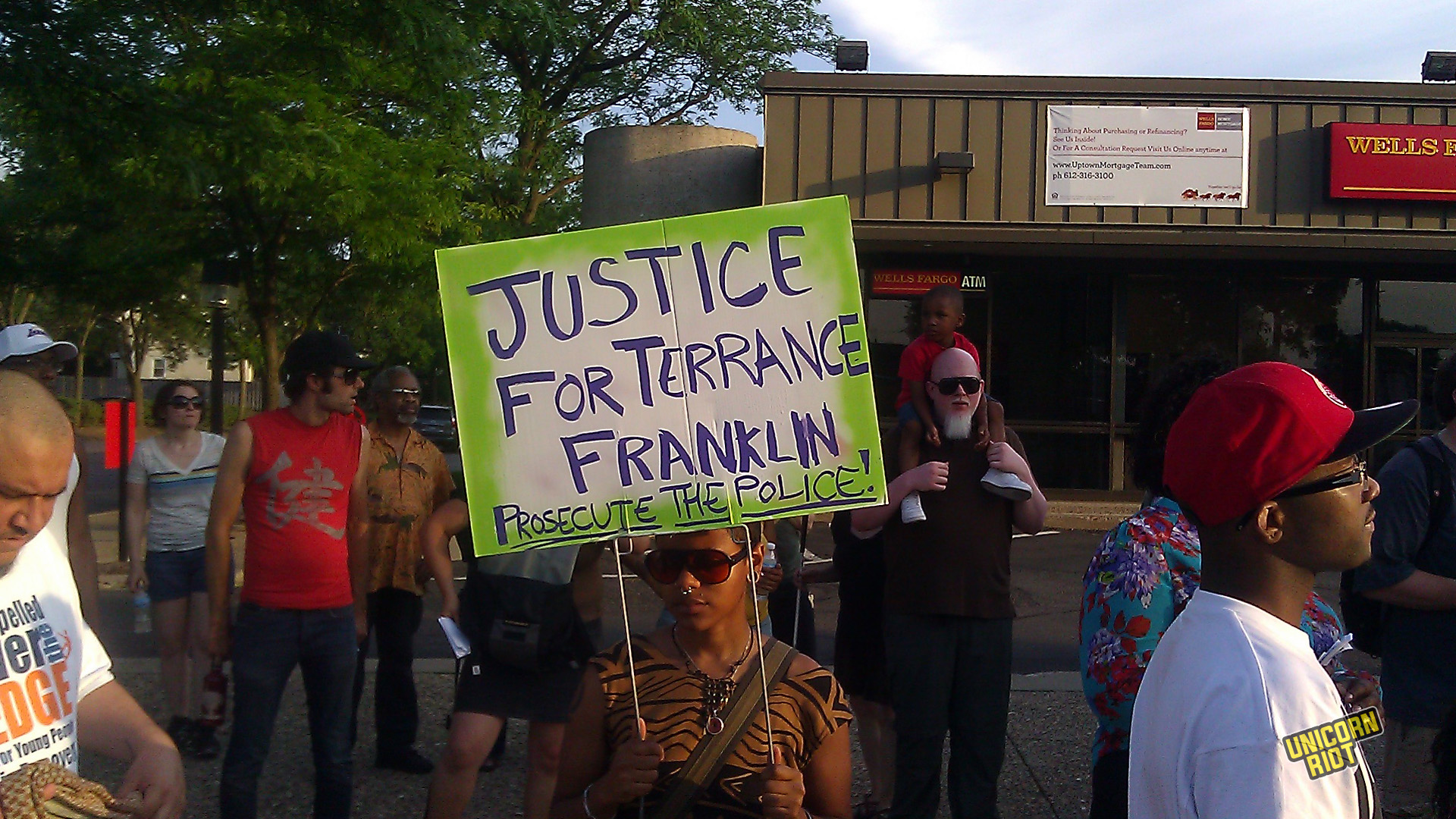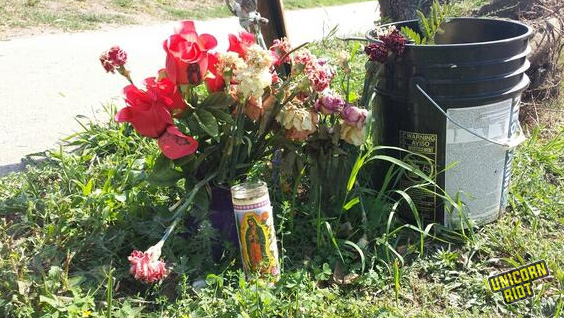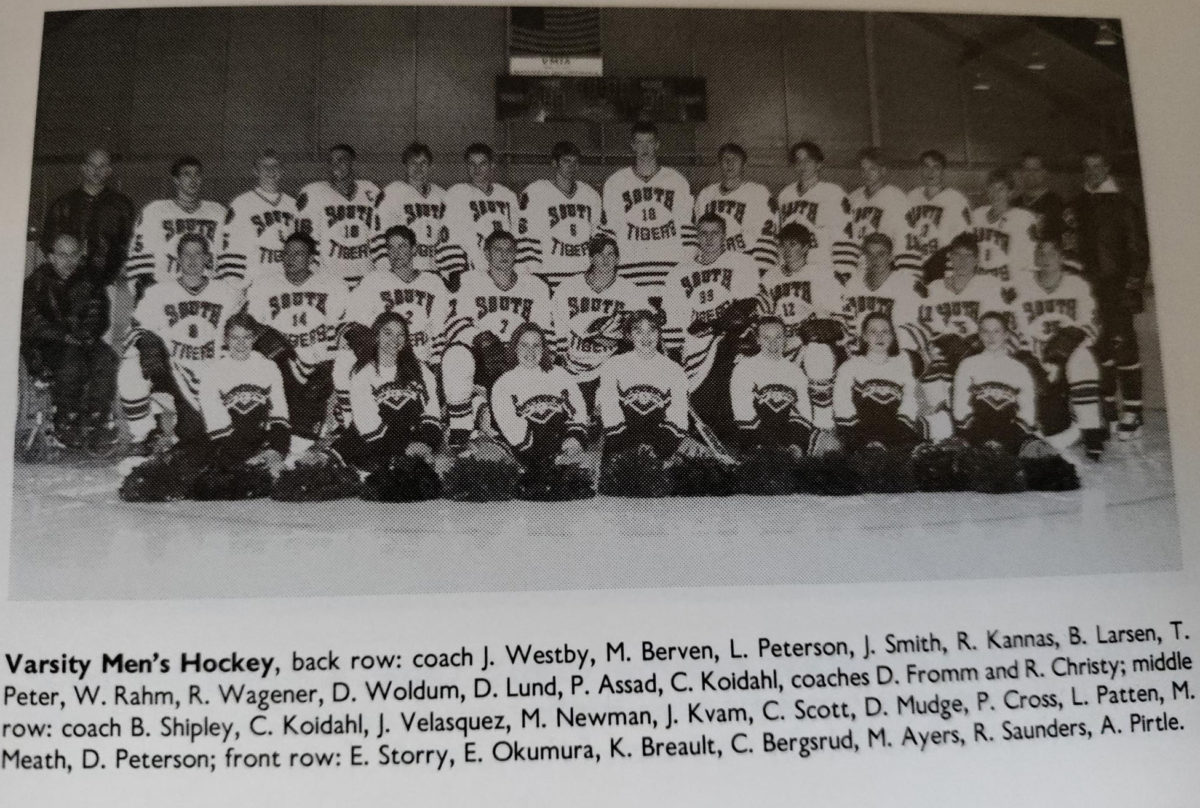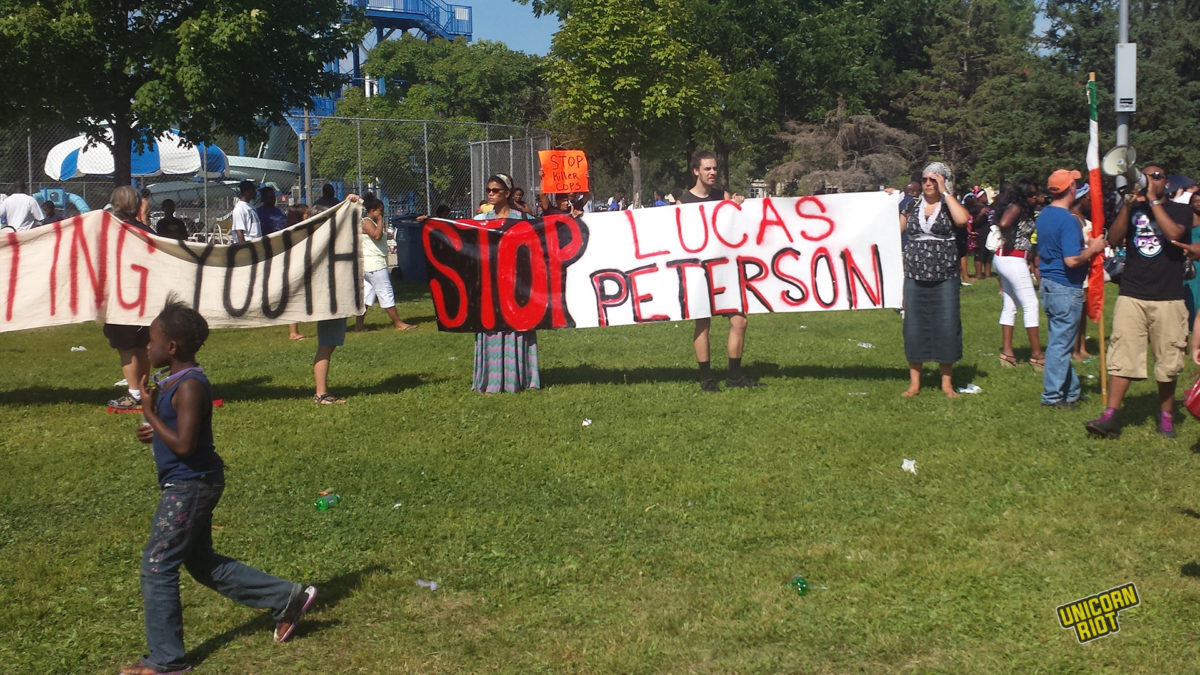A bitter, protracted labor dispute in the poverty-stricken country of Cambodia has revealed the true nature of a brutal system where wealth and power is violently held onto by a tiny ruling elite.
At the center of this struggle lies a beleaguered union at NagaWorld, the nation’s largest casino. Workers in the Labor Rights Supported Union of Khmer Employees at NagaWorld (LRSU) have been on strike for a grueling 17 months. In that time, union members have embraced a daunting struggle with a powerful, intransigent employer, and a notoriously authoritarian government. They have been pushed to the limits of physical and mental exhaustion.
The road to victory for the LRSU is incredibly narrow, and the future wildly uncertain. Union members routinely face intimidation, surveillance, and violence from the authorities, and union leaders are currently in prison, or are awaiting sentencing in an unforgiving legal system. But the LRSU membership is a defiant and audacious group that refuses to give up.
Emerging from the Chaos
September 11, 2022. It’s a typical day in Phnom Penh, the sprawling, densely populated capital of Cambodia. It feels as if the mid-morning sun grabs the city with outstretched arms, and pulls it ever closer. Over 400 union activists from a dozen different unions, LRSU the most prominently represented, line the street opposite the Ministry of Labor and Vocational Training. They bring with them a petition to deliver to the ministry demanding an end to the union busting which has besieged the labor movement throughout the pandemic. It’s unlikely the ruling Cambodia People’s Party will do anything in response to it, but the unions present are determined to fight.
After a number of passionate speeches by union leaders are given, workers start to head east through the city. Marches such as this are rare here, and in the past were violently suppressed by the authorities. The union activists know this and take a calculated risk. As the protest spills out into the streets, it becomes evident rather quickly that the police are ill-prepared to respond to this. The steady flow of tuk tuks and motos grinds to a halt. The police frantically scramble to reassert their authority.
The police form a human wall to prevent the unionists from moving forward, but the momentum of the crowd and sheer willpower of the union activists push the police back. Added police reinforcements stop them from moving forward. Amidst screams of opposition and terror emanating from the crowd, the police start to beat the demonstrators with their fists, and walkie talkies. It’s a terrifying display of brute force.
One worker, beaten into shock by the police, slumps to the ground and throws up. His skin turns pale as sweat drips down his face. His eyes roll back into his head, and he collapses on the burning hot pavement. Union members rush to his aid. One grabs onto him and wraps her arms around him. Several others frantically fan their picket signs to cool him down. A deep feeling of panic and fear is palpable, and it grips the crowd in its clutches.
And just at that moment, teetering at a precipice of absolute police terror, the workers collectively wrench free from the chaos. They regather and reroute the march, ever determined to continue across the city to their final destination at NagaWorld.
Out of the throngs of the crowd emerges LRSU president Chhim Sithar alongside other unionists. They plead with the police and a Cambodia People’s Party (CPP) city official who shows up, worried that another attack by the authorities is iminent. Short, with piercing eyes, and a calm demeanor, she walks undaunted, and with purpose.
As the crowd rushes forward, and the police prepare another violent outburst to subdue the workers, Chhim can be seen walking next to the CPP official who wears a drab gray suit and towers above her. She grasps her hands together in sampeah, a traditional sign of respect in much of Southeast Asia. Her eyes are glazed over as she pleas for the police to fall back.
The march is unpermitted, and the official could easily unleash the full fury of the police on the union members and get away with it. But he shows mercy. An agreement is reached. The police will leave, and workers will disband after they deliver their demands to another ministry. It’s a favorable outcome in a country that is so fiercely anti-union.
This was eight months into the longest strike in recent memory in the “Kingdom of Wonder.” Since then, the situation of the LRSU has become increasingly, and oppressively, arduous.
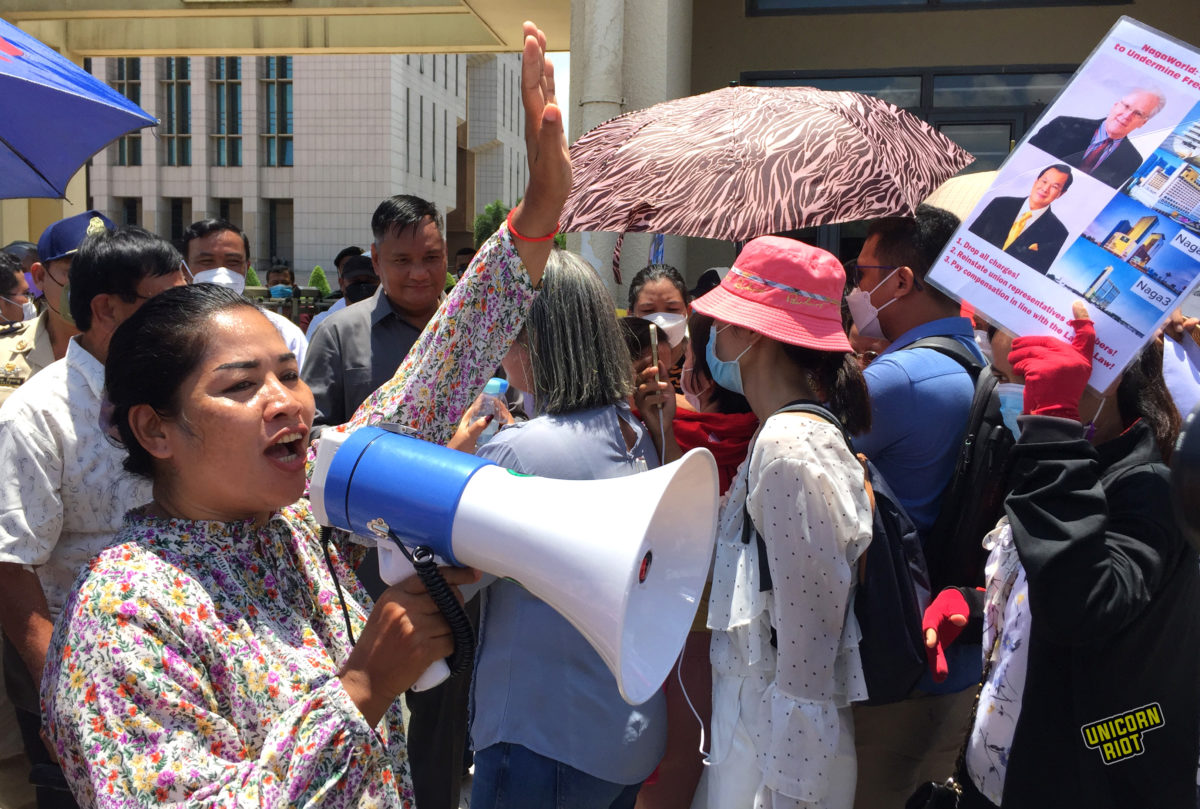
“We Need LRSU Union!”
NagaWorld is an economic juggernaut in Cambodia. The casino has deceivingly humble origins. It started operations on a small riverboat on the muddy banks of the Mekong River in Phnom Penh in 1995. As casinos became more lucrative, and the country’s economy emerged from the wreckage caused by decades of war and genocide, NagaWorld consolidated monopoly control of gambling in Phnom Penh. This enabled the company to rapidly expand operations, construct buildings that loomed over the city, and garner a reputation as being the destination resort, hotel, and casino in Phnom Penh, one that largely caters to Chinese and Western tourists. Then the COVID-19 pandemic started.
As COVID-19 furiously spread across the planet, the company claimed that their ability to make a profit was racked by the shutdowns, and global economic slump. Although the company still made a $16 million profit during the pandemic, in April 2021 management laid off 1,300 workers.
But the LRSU, which formed in 2009, contends that this mass termination was a calculated move by the company to bust their union. Of the 1,300 fired workers, the entire union leadership, and over 1,100 other union members, were thrown on the street.
In desperate need of money, most of the fired workers took a small severance and agreed to leave the company. But 365 union members wanted to be reinstated. After months of failed negotiations over the union’s simple demand for the company to reinstate these workers, union members decided to switch gears. “There were options after we, the union, and the company couldn’t find a solution. The first was to sue in court, and the second was to start striking. All the union members decided to strike.” Support for the strike was nearly unanimous. The date for the start of the strike was set for December 16, 2021.
The same day the strike started, a Phnom Penh judge issued a warrant that deemed any strike activity starting on or after December 18 illegal, and that these violations would be dealt with to the fullest extent of the law.
The LRSU has always argued that the judge ruled erroneously, and that the union took every step in full accordance with the Constitution and labor law to ensure that the strike was not only just, but also legal.
Union members were undeterred by the judge’s warrant, and commenced with their collective action. When the strike erupted it was a breathtaking display of working class power and protest not witnessed in the streets of Phnom Penh in years. Thousands of NagaWorld union members marched through the streets, demanding that NagaWorld reinstate the fired workers.
The sprawling NagaWorld complex that normally dominates the downtown cityscape was eclipsed by the masses of workers clamoring for justice on the streets below. Raucous yet peaceful demonstrations were a daily occurrence. One union member captured a series of stunning photographs that rapidly spread on social media. From the rooftop of a nearby building, her camera captured images of workers spaced out on the street below, wearing brilliant blue LRSU shirts, spread out to spell the words “We need LRSU Union.” This was a mantra the workers would repeat throughout the year. Their union was a necessity. But the company didn’t cave to the union’s demand. They instead doubled down in their effort to repress the strike.
Repression, Cambodian Style
As people were preparing to ring in the new year on December 31, Sovandy Ry and other union leaders found themselves trapped inside union headquarters. Ten police cars and a phalanx of officers surrounded the building, then initiated the raid. They arrested eight unionists, and seized computers and phones.
When Ry and others were brought to the police station they were informed they were charged with incitement. If found guilty they could serve a maximum of 5 years in prison. “This was a real injustice for me. I did nothing wrong. I just wanted my job back for a living. But they arrested me,” recalled Ry, who started working at NagaWorld in 2006. While fighting back tears she said, “I have no words to describe this feeling.”
Four days later, plainclothes police attacked union president Chhim Sithar on the picket line. They tackled her to the ground and threw her in an unmarked car. She was also charged with incitement, and joined her fellow unionists in prison. Arrests mounted on the picket line sporadically and union members were charged with varying crimes.
“When I arrived at the prison, there were almost ninety prisoners in one room, 6 by 5 meters. The bathroom inside was so dirty. Whenever we used the bathroom there were 5 or 6 people inside,” said Ry. “I was so shocked in prison – it was not at all like how it is in the movies. I slept on the floor where there were three very narrow lines of people. I couldn’t move my body. Everything was difficult. If my family didn’t support me I would have had to force myself to eat the prison food with worms in it.”
Ry received an incredible amount of support from the other prisoners, all of whom expressed confusion as to why she and the other LRSU members were locked up with them. “They showed their warm hearts to me,” said Ry who recalls the inmates telling her, “You did nothing wrong like stealing or selling drugs like us. This really is an injustice for you.”
Chhim Sithar, Ry Sovandy, and the others were kept in isolation from each other, and were denied regular consultations with attorneys. Ry reccounted life in prison as agonizing and monotonous, but a major issue for her was that she and the other union leaders were denied access to any information about the strike. With the leaders in prison cells, separated from the rest of the union, the authorities intensified their repression.
A little after a month into the strike, one union member who had not attended the strike in weeks tested positive for COVID-19. The Health Ministry used this case to weaponize the pandemic, enabling the authorities to repress the strike. Despite a lack of evidence, government officials claimed the strike was a “superspreader event,” despite the fact that all workers were vaccinated and remained masked and socially distant during the protests.
On March 16, 2022, the Royal Government of Cambodia delivered a public statement, proclaiming that the Ministry of Labor and the authorities “do not permit the disgruntled employees to assemble in great numbers at this time due to the need to prevent the spread of COVID-19 and to keep all Cambodians safe.” Any workers who continued to strike, warned the government, would be “removed peacefully, and are at risk of losing their benefits.” The lines were drawn in the sand.
In the weeks and months that followed, whenever the striking workers met, authorities encircled them and forced them onto buses on which they were driven to a facility on the outskirts of Phnom Penh, tested for COVID and kept overnight, sometimes for days. The process was anything but peaceful.
Police went out of their way to injure the workers. It was a common sight to see the police shove workers to the ground or on the bus, hit and punch them, or bludgeon them with walkie talkies or other blunt objects. At one point, the police broke the nose of a striking worker. Images of her bloodied face became viral on social media.
Violence also culminated to deadly levels. On May 11, 2022, police beat striking worker Ratana Sok and pushed her into oncoming traffic. Sok was pregnant at the time. Just 17 days later, she had a miscarriage. She spoke to Radio Free Asia about her turmoil. “Losing my beloved baby has caused me an unbelievable pain that I will feel the rest of my life,” said Sok Ratana. “This experience has shown me the brutality of the authorities and it has deeply hurt my family.”
Feeling cornered-in, and reeling from a constant deluge of violence, workers became tactically innovative. When police set up barricades to prevent workers from getting close to NagaWorld workers broke through the lines. When the police threw them on buses, workers jumped out of the windows, forcing the police to catch them yet again. When the buses rolled through the city, workers hung their signs out of the windows and yelled to people watching the spectacle to educate them about the strike.
And when the police patiently waited every day to detain the large group of workers that arrived at the same time and place near the casino, the collective mass of picketers transformed into dispersed, highly coordinated smaller cells of workers who would swarm on the casino by tuk tuk from multiple locations throughout the city. Workers learned to become tactically innovative, and flexible. It was needed to weather such a lengthy, bitter fight.
The Longest Strike in Cambodian History
Beanrun David is a young LRSU activist who has been on the front lines of the strike since it began. When he started working at NagaWorld in 2019, he initially didn’t know much about the union, and joined the LRSU “not because of what happened to me but because of what happened to my co-workers. They got fired from the company, without any good reason… I thought the company violated their labor rights, so I started to learn more about the union.”
“I joined the Union, then the company always asked for a meeting, and they threatened me to not join or get involved with the union, or else they would fire me.” Beanrun said he continued to learn more about his rights as a worker, and enthusiastically joined the strike. He was not easily intimidated by management’s threats. Five months into the strike, the company retaliated by firing him “for absence and bad behavior,” recounted Beanrun. He said that the company’s reason for terminating him was “completely opposite” from reality. Hundreds of other works have similar stories.
Beanrun’s participation in the strike has been challenging at times. Currently, he depends on his family for support. “I try to find part-time jobs as much as I can. I can do everything like cleaning, delivery… but I can’t take any full-time job since I also need to come to the strike every week.”
“I’ve cut down on food and living expenses but I still need to motivate myself to participate in the strike. Life has completely changed from having a salary every month until now,” said Beanrun. “Sometimes I can’t even find 100 riels in my pocket” – that’s a little less than 3 cents.
Beanrun David is not alone. With little-to-no income coming in, many union members rely on the support of family and friends to survive. It’s common to see strikers selling everything from clothes to honey to homemade paper flower bouquets on social media to make ends meet. Many have scattered across the city, and the country, to look for work, all the while continuing to go on strike.
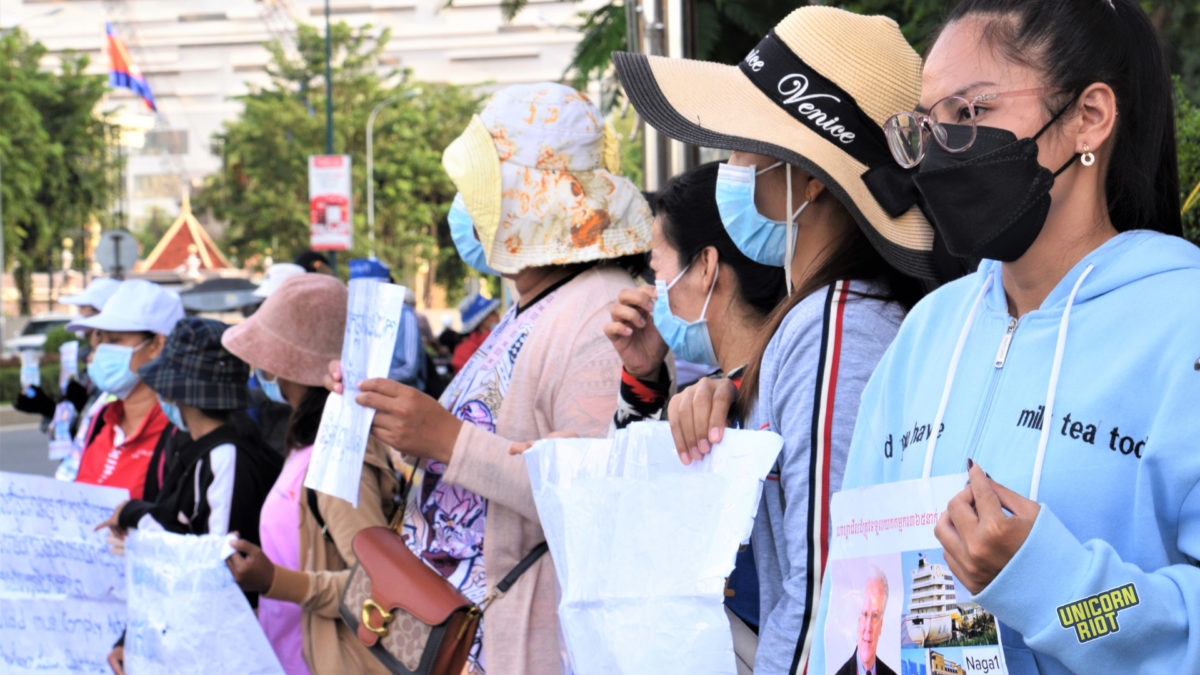
In order to sustain such a long strike, workers set up a strike fund as donations large and small poured in from across the country and around the world. Other unions and human rights groups in Cambodia have fiercely supported the striking workers. Unions around the world, from the International Trade Union Confederation to the radical Industrial Workers of the World have delivered statements and funds to support the LRSU.
But in January 2023, a $5,050 transfer sent to the strike fund’s ABA Bank account from Australian feminist group Urgent Action Fund was blocked by the bank. An ABA spokesperson justified this move, saying that there was “negative news about NagaWorld,” and that there were concerns over “money laundering” despite no evidence of this taking place.
“This case really impacts workers because this money will support them while everyone doesn’t have any income,” said Ry Sovandy. “This is humanitarian support. We got the money to buy food to support strikers. If we cannot get this support, the strikers won’t be able to even buy rice.” Despite these new hardships, workers are refusing to end the strike.
Not a day goes by that Beanrun David does not feel distressed. “I’m worried because I don’t know when they can solve our problem because it has been a long time already. But I’m telling myself I can’t give up. If I give up, it would set a bad example for workers,” said Beanrun. He also thought that if the workers gave up, then other companies would replicate the violent union busting measures NagaWorld utilized on their own employees. “I have to keep going no matter how starving we are.”
The NagaWorld strike is an anomaly. Strikes simply do not last this long in Cambodia. They are often a day or two day affair which are quickly suppressed by authorities.
Khun Tharo of the Center for Alliance of Labor and Human Rights (CENTRAL), a Cambodian organization that assists workers and human rights activists, had much to say about the unique nature of the NagaWorld strike. “I would say, yes, in the history of the Cambodian labor movement, this is the longest tentative strike.”
“There are a lot of elements why the strike lasts so long: the principles of unionism, creating a strong solidarity among membership and what the workers want to receive, and their resistance, and courage not to conform,” he said. “Very early on, union members knew just how powerful of an employer NagaWorld is, and how difficult the strike would be. They were well prepared for the struggle ahead,” he said.
“I think the union at NagaWorld is very unique in terms of the workers and members and activists. They are very empowered in terms of their basic fundamental rights, and the union members are strongly educated,” said Khun. “Their strategy of resistance, nonviolence and waging a peaceful strike is well informed.”
The major question that looms is whether or not the LRSU can survive the political minefield the Cambodian power structure placed in front of them. Workers are walking through that field as we speak.
Stay tuned for Part. II of this report
Special thanks to Keat Soriththeavy for contributing to this report
Follow us on Twitter, Facebook, YouTube, Vimeo, Instagram, Mastodon and Patreon.

The post The Battle at NagaWorld: The Longest Strike in Cambodia History PT.I appeared first on UNICORN RIOT.
by Unicorn Riot via UNICORN RIOT

